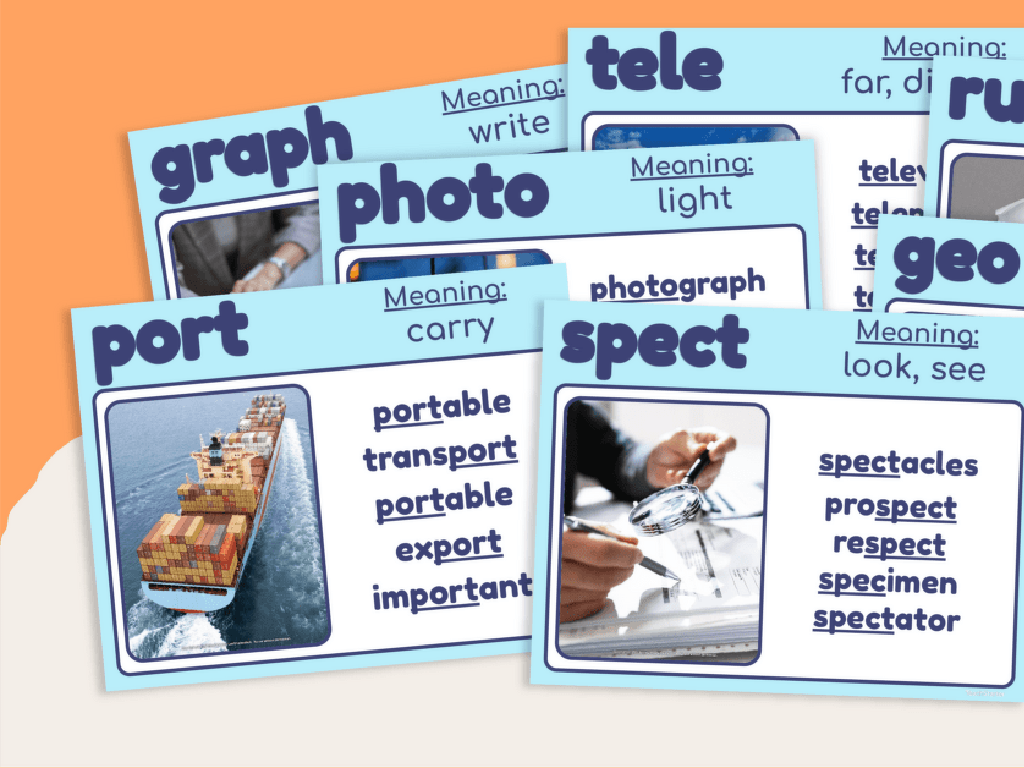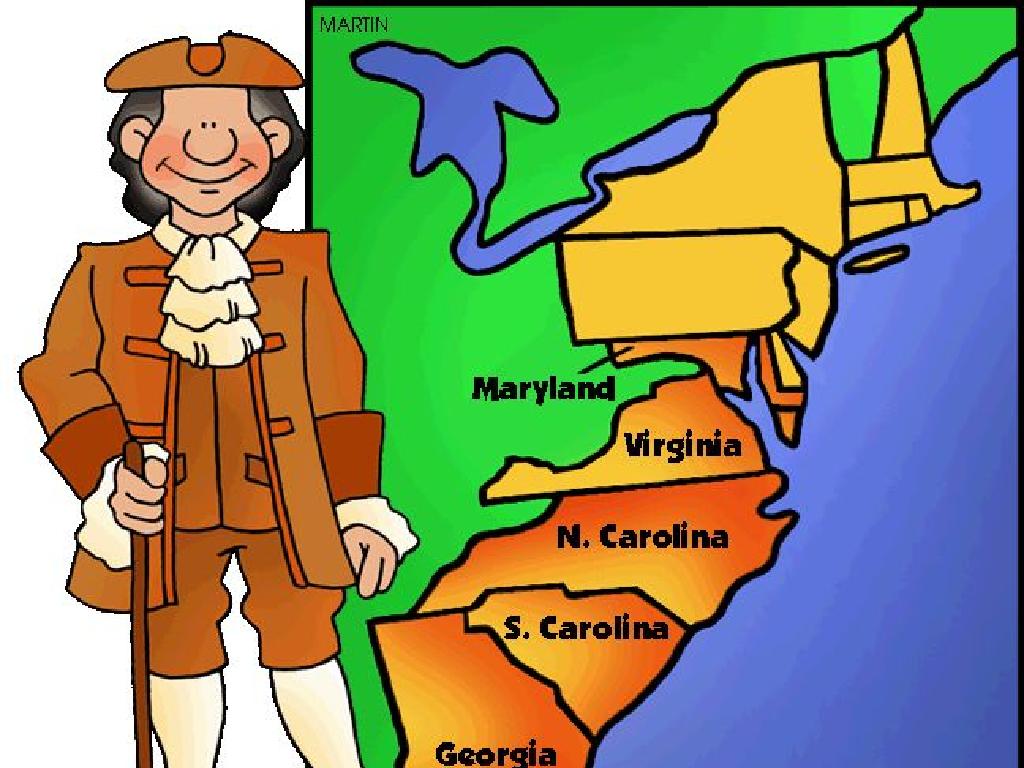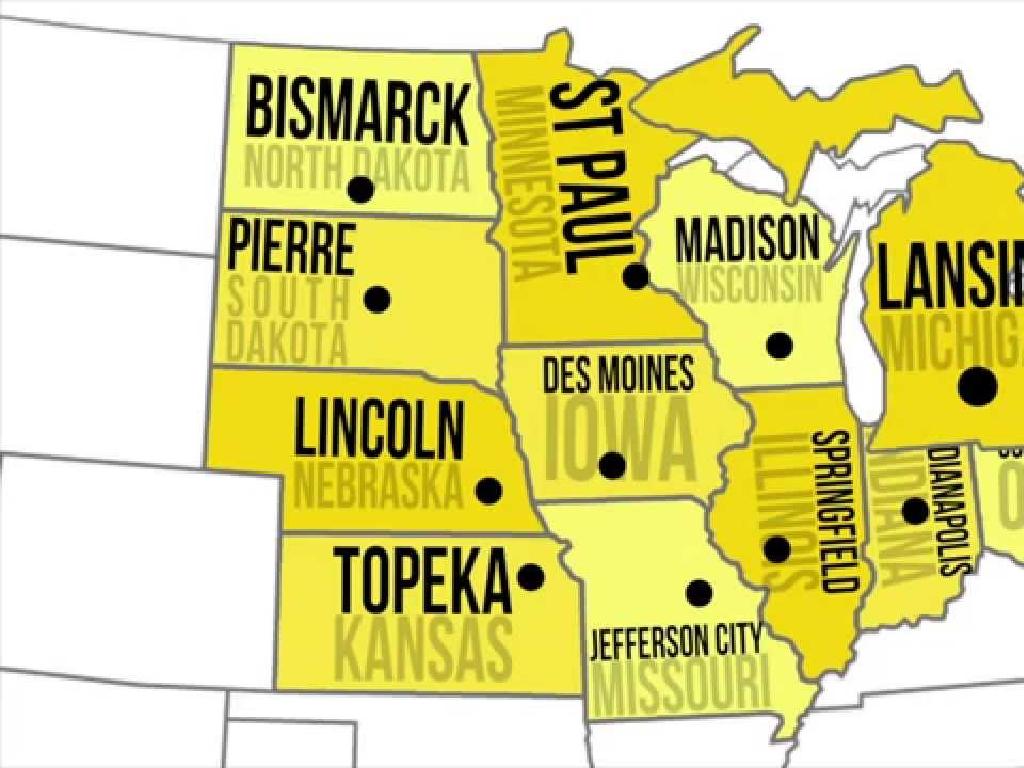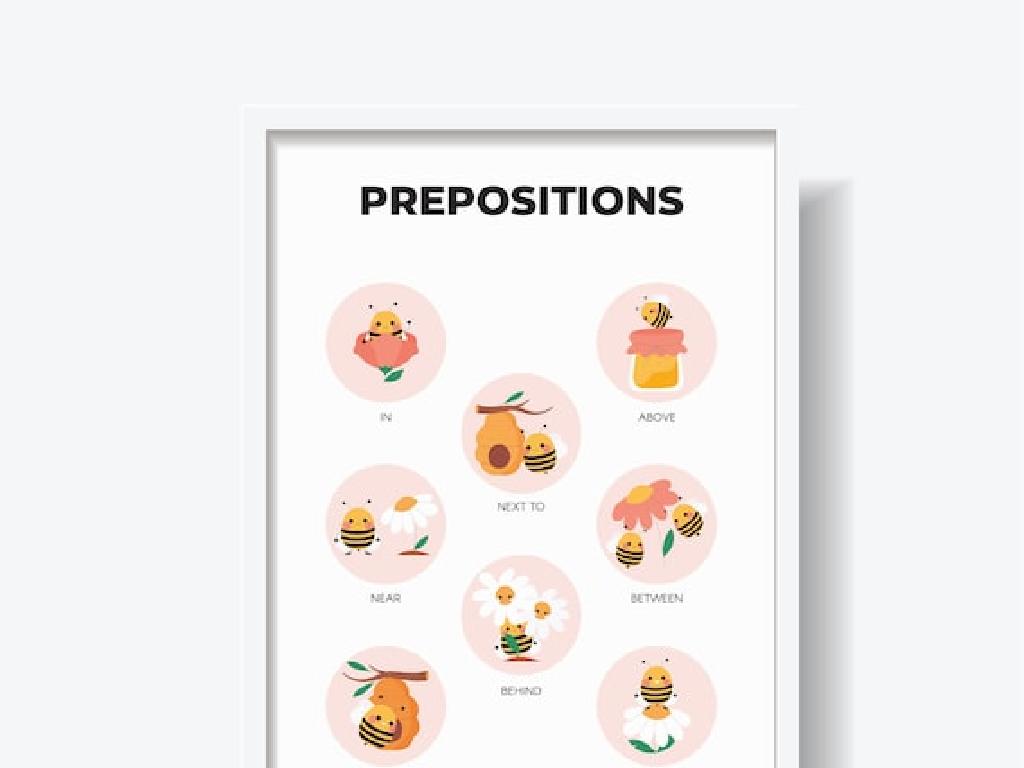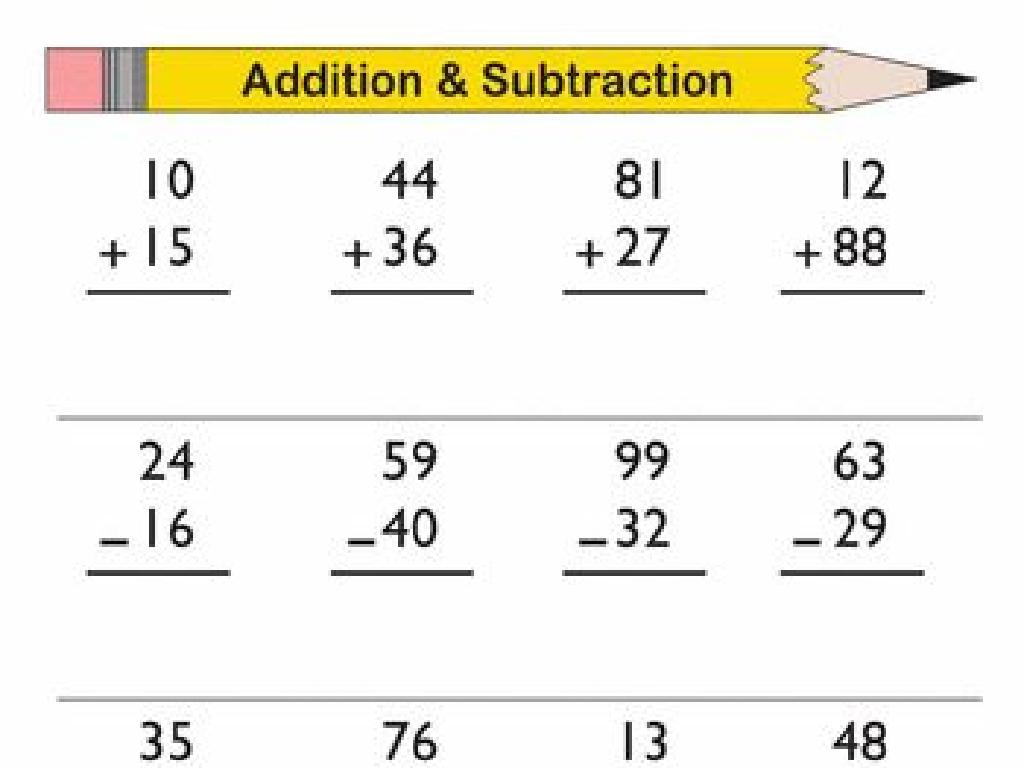Abbreviate Mass And Volume Units
Subject: Science
Grade: Fourth grade
Topic: Units And Measurement
Please LOG IN to download the presentation. Access is available to registered users only.
View More Content
Understanding Mass and Volume
– What are mass and volume?
– Mass measures how much matter is in an object, volume measures how much space it takes.
– Reasons we measure things
– To compare, cook, or build, we need to measure objects accurately.
– Common units for mass
– Grams (g), kilograms (kg) for heavier items.
– Common units for volume
– Liters (L), milliliters (mL) for liquids.
|
This slide introduces the basic concepts of mass and volume, which are fundamental in science and everyday life. Mass is the amount of matter in an object, and volume is the space that object occupies. Measuring is essential for many activities, from cooking to construction. Common units of mass include grams and kilograms, where 1,000 grams make up a kilogram. For volume, liters and milliliters are used, with 1,000 milliliters making up a liter. Use examples like a bag of sugar (mass) and a bottle of water (volume) to help students relate to the units. Encourage students to think of other examples where they have encountered these units.
Understanding Mass and Its Measurement
– Mass: Measure of matter
– Mass is how much matter is in an object, not dependent on location.
– Mass vs. Weight: They differ
– Mass is the amount of matter, while weight is the force of gravity on that matter.
– Common units: Grams & Kilograms
– Grams (g) for light objects, kilograms (kg) for heavier ones.
– Tools to measure mass
– Scales and balances are used to measure how heavy something is.
|
This slide introduces the concept of mass as a fundamental property of matter, distinct from weight, which is influenced by gravity. Emphasize that mass remains constant regardless of location, whereas weight can change if the force of gravity changes. Explain that grams and kilograms are the standard units of mass, with grams used for small objects and kilograms for larger ones. Show examples of scales and balances, which are the tools used to measure mass. Use relatable examples like comparing the mass of a pencil (in grams) and a backpack (in kilograms) to solidify their understanding.
Abbreviating Mass Units
– Abbreviate grams as ‘g’
– ‘g’ stands for grams, a unit of mass
– Abbreviate kilograms as ‘kg’
– ‘kg’ means kilograms, 1000 grams
– Practice mass abbreviations
– Write ‘g’ and ‘kg’ for different objects’ mass
|
This slide introduces students to the abbreviations for mass units, specifically grams and kilograms. Start by explaining that scientists use abbreviations to make writing and communication more efficient. Show examples of objects with their mass labeled in grams and kilograms, and explain that ‘g’ stands for grams, which are small units of mass, while ‘kg’ stands for kilograms, which are larger units (1 kilogram = 1000 grams). Have students practice by writing the correct abbreviation next to various objects’ mass measurements. This will help them become familiar with using these abbreviations in real-life scenarios and in scientific contexts.
Understanding Volume and Its Units
– Volume: space an object occupies
– Common units: liters, milliliters
– L for liters, mL for milliliters
– Tools for measuring volume
– Graduated cylinders, measuring cups
– Practice abbreviating units
– Write ‘L’ for liters, ‘mL’ for milliliters
|
This slide introduces the concept of volume as the amount of space an object takes up, which is a fundamental measurement in science. Emphasize the common units of volume, liters and milliliters, and how to abbreviate them. Show examples of tools like graduated cylinders and measuring cups that scientists and students use to measure volume. Encourage students to practice writing the abbreviations for these units and to recognize them when reading or doing experiments. This will help them become familiar with the metric system, which is used in scientific measurements.
Abbreviating Volume Units
– Abbreviate liters as ‘L’
– ‘L’ is the short form for liters, the unit for measuring liquid volume.
– Abbreviate milliliters as ‘mL’
– ‘mL’ stands for milliliters, a smaller volume unit than liters.
– Practice volume abbreviations
– Let’s write ‘L’ and ‘mL’ for different liquid volumes.
|
This slide introduces students to the abbreviations for common volume units used in science. Start by explaining that just like we use shortcuts in language, we also use them in science to save time and space when writing. Show that ‘L’ is used for liters, which could be for a bottle of soda, and ‘mL’ is for milliliters, like in a medicine dropper. Have students practice by writing the abbreviations next to various liquid measurements. For example, ‘500 milliliters of water’ becomes ‘500 mL of water’. Encourage them to think of other examples and to always check their science labels for these abbreviations.
Mass and Volume Units in Real Life
– Examples of different masses
– A feather is light (grams), a textbook is heavier (kilograms).
– Examples of different volumes
– A teaspoon of water (milliliters), a swimming pool (liters).
– Match objects with correct units
– Which is correct: a pencil in liters or grams?
– Practice with real items
– Use classroom objects to practice measuring.
|
This slide aims to help students understand the concepts of mass and volume through relatable examples. Discuss how different objects have different masses and volumes, and the units we use to measure them. For mass, use examples like a feather (light, measured in grams) and a textbook (heavier, measured in kilograms). For volume, compare a teaspoon of water (small volume, measured in milliliters) to a swimming pool (large volume, measured in liters). Engage the class in an activity where they match everyday objects with the appropriate unit of measurement for mass and volume. Finally, encourage hands-on practice by measuring the mass and volume of items found in the classroom, reinforcing the real-world application of these concepts.
Class Activity: Measure and Abbreviate!
– Measure mass of objects
– Use scales to find how heavy items are
– Abbreviate mass units
– Write ‘g’ for grams, ‘kg’ for kilograms
– Measure liquid volumes
– Fill beakers with water and read the scale
– Abbreviate volume units
– Use ‘ml’ for milliliters, ‘l’ for liters
|
This interactive activity is designed to help students understand and practice abbreviating mass and volume units. Set up stations with different classroom objects and a scale for measuring mass. Have another station with beakers and water for measuring volume. Students will rotate through the stations, measure the mass and volume of various items, and then write down the measurements with the correct abbreviations. After the activity, students will share their findings, reinforcing their understanding of measurement units and their abbreviations. For the teacher: Prepare a variety of objects and ensure there are enough scales and beakers. Guide the students on how to read the scales accurately. Have a discussion on why we abbreviate units and the importance of standardized measurement in science.
Review and Quiz: Mass & Volume Abbreviations
– Review unit abbreviations
– Remember, ‘g’ for grams, ‘kg’ for kilograms!
– Take a pop quiz on units
– Write the short form of ounces, liters, etc.
– Discuss quiz answers
– We’ll go over the answers together in class.
– Learn from each other
– Share what you found tricky and learn together.
|
This slide is meant to consolidate the students’ knowledge of abbreviating mass and volume units. Start with a quick review of the abbreviations for grams (g), kilograms (kg), liters (L), milliliters (mL), and ounces (oz). Then, conduct a pop quiz where students write down abbreviations for various measurements provided. After the quiz, discuss the answers openly in class, allowing students to correct their mistakes and understand the correct abbreviations. Encourage students to share which abbreviations they found difficult and why, fostering a collaborative learning environment. This activity will help reinforce their understanding and recall of measurement units in a fun and interactive way.
Conclusion: Mass & Volume Abbreviations
– Recap: Mass & Volume Units
– Importance of Correct Abbreviations
– Homework: Measure & Abbreviate
– Find common household items, measure their mass and volume, and note the units (e.g., grams – g, liters – L).
– Share Findings Next Class
– Be ready to discuss your measurements and what you learned about units.
|
As we wrap up today’s lesson, remind students of the key points we’ve covered about mass and volume units. Emphasize the importance of using the correct abbreviations for these units, as this is crucial for clear communication in science. For homework, students should find items around their home to measure. They should practice using scales for mass and measuring cups for volume, and write down their findings with the correct abbreviations. This will help reinforce today’s lesson and prepare them for the next class, where they will share their findings and discuss the importance of measurement in everyday life.

